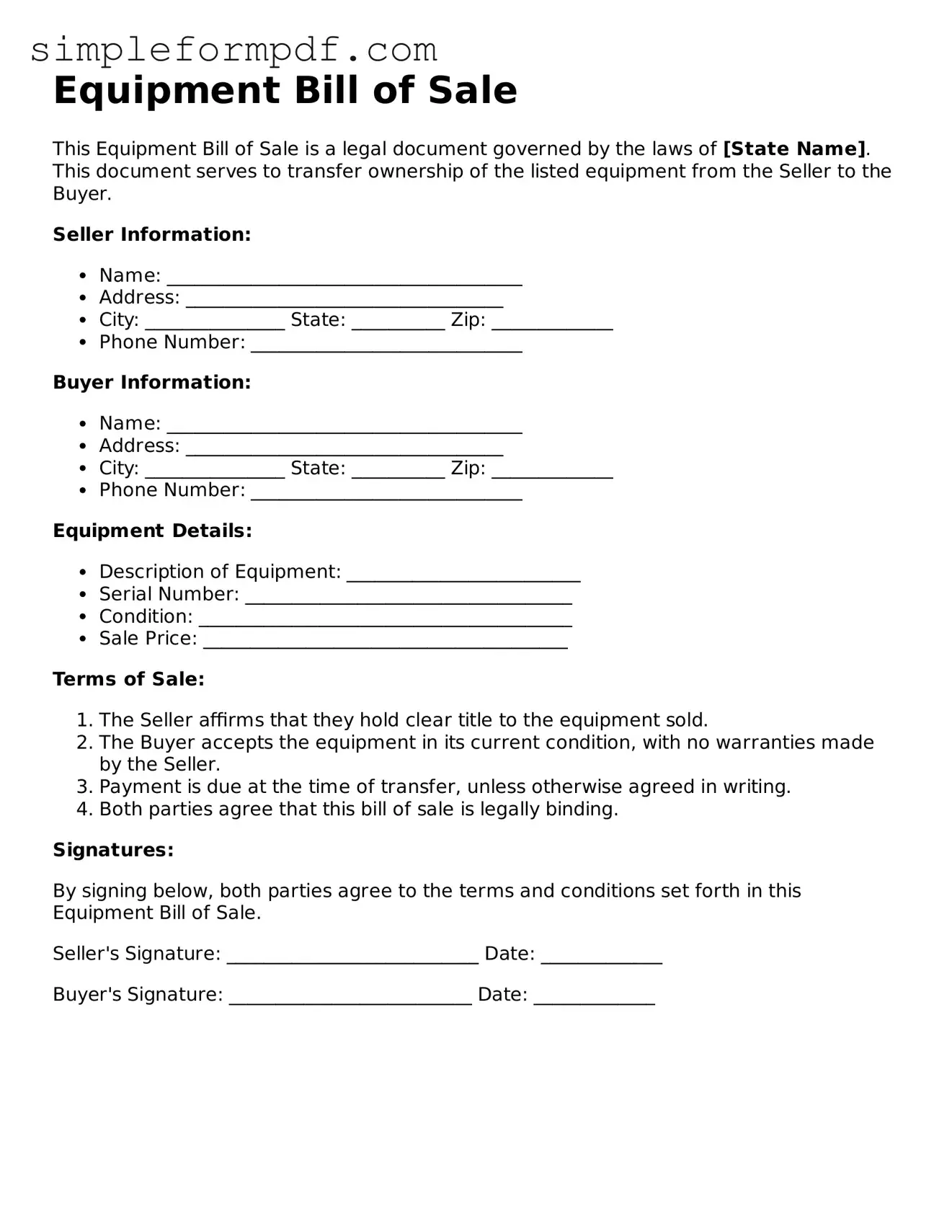Equipment Bill of Sale
This Equipment Bill of Sale is a legal document governed by the laws of [State Name]. This document serves to transfer ownership of the listed equipment from the Seller to the Buyer.
Seller Information:
- Name: ______________________________________
- Address: __________________________________
- City: _______________ State: __________ Zip: _____________
- Phone Number: _____________________________
Buyer Information:
- Name: ______________________________________
- Address: __________________________________
- City: _______________ State: __________ Zip: _____________
- Phone Number: _____________________________
Equipment Details:
- Description of Equipment: _________________________
- Serial Number: ___________________________________
- Condition: ________________________________________
- Sale Price: _______________________________________
Terms of Sale:
- The Seller affirms that they hold clear title to the equipment sold.
- The Buyer accepts the equipment in its current condition, with no warranties made by the Seller.
- Payment is due at the time of transfer, unless otherwise agreed in writing.
- Both parties agree that this bill of sale is legally binding.
Signatures:
By signing below, both parties agree to the terms and conditions set forth in this Equipment Bill of Sale.
Seller's Signature: ___________________________ Date: _____________
Buyer's Signature: __________________________ Date: _____________
